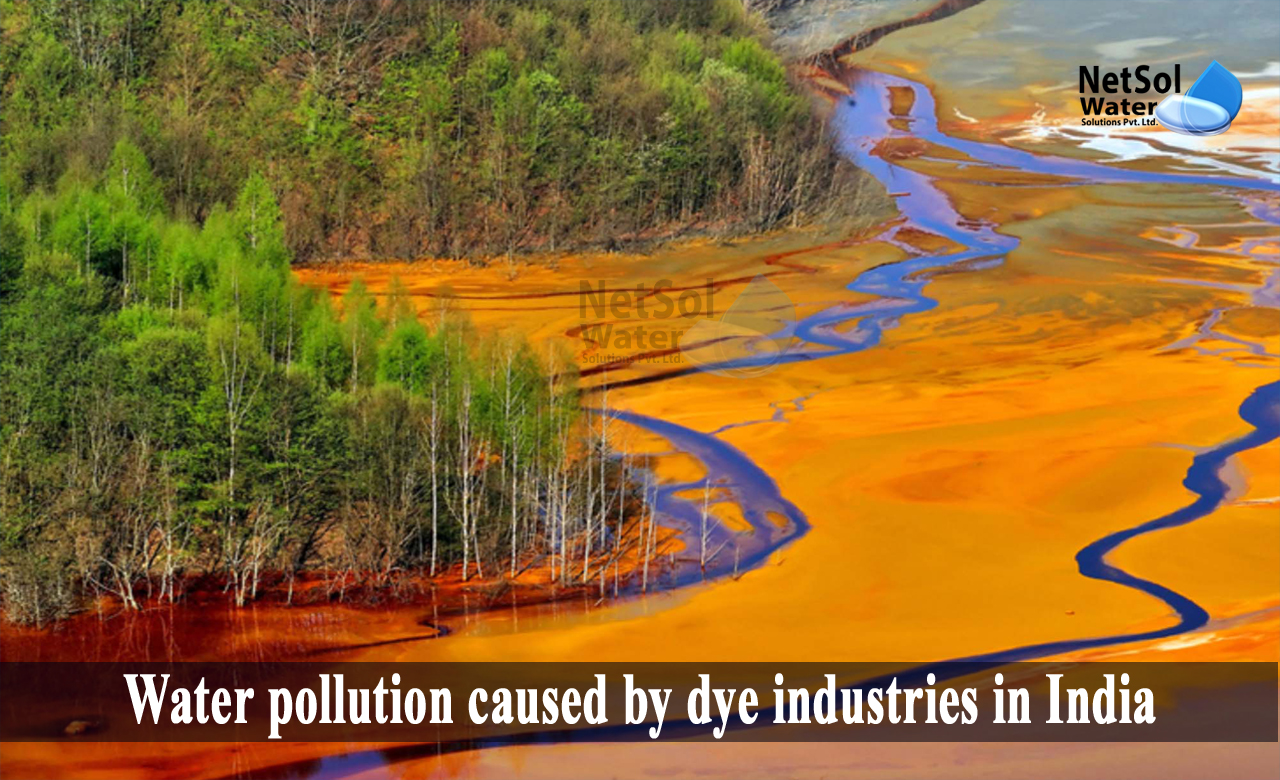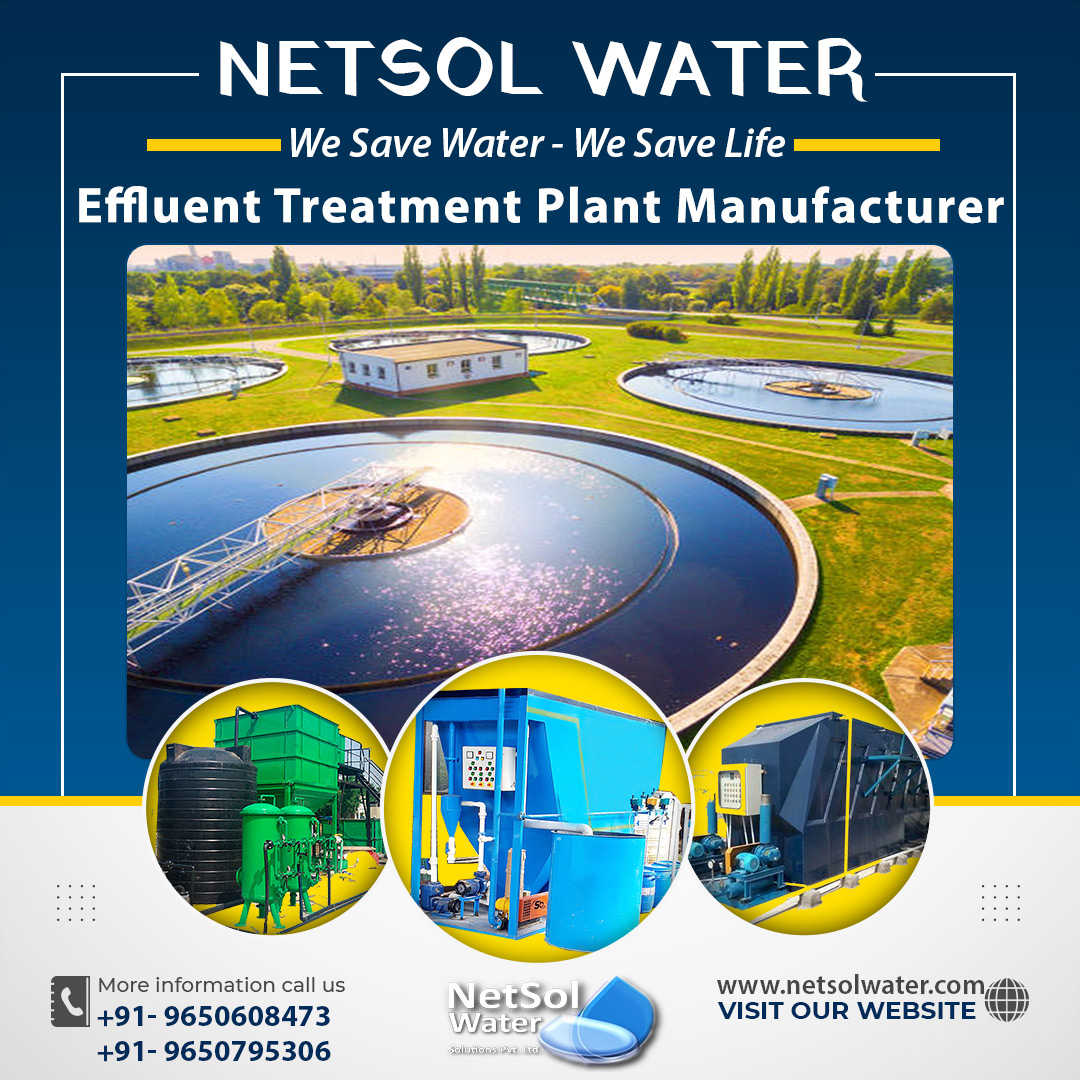Dyeing and printing industrial wastes, both liquid and solid that are disposed of in land and water bodies percolate into groundwater, and are transported in the direction of groundwater flow.
Because, of the high permeability of the soil, the rate of percolation and transport of pollutants in groundwater flow increases, in arid and semiarid conditions. As a result, various pollutants enter the groundwater system and endanger groundwater quality, affecting the socioeconomic lives of those who rely on groundwater for various purposes.
Let’s see the effect of water pollution caused by dye industries in India, and their effective treatment.
How to Water pollution caused by dye industries in India?
Water is used in the three-step dyeing and printing process, which includes bleaching, dyeing, and printing.
The cloth is first dipped in turkey oil (caustic soda slurry) to remove starch before being passed, through a bleaching powder solution and washed. This process alkalinizes the cloth, which is then heated with dilute acid and sodium sulfate.
After heating, the cloth is washed with detergent and a whitening agent and air dried. The cloth is tightly closed on a roller and passed through a tray of colour dye solutions, before dying. The procedure is repeated several times, and chemicals are used to permanently fix the colour. The cloth is washed again after dyeing.
Pollutants in wastewater produced by dye industries
· TSS
· pH
· COD
· BOD
· Chemicals
· Heavy Metals
· Residual Chlorine
The pH of the wastewater almost ranges from 6.8 to 7.3, which is close to natural levels. Although, sulphuric and hydrochloric acid is used in the colour-fixing diazotization process, it is neutral due to the use of other salts and caustic slurry in other steps.
The wastewater's electrical conductance (EC) ranges between 2220 and 3660 mho/cm. The high conductance indicates that the wastewater contains a high concentration of ions, which is supported by the high total dissolved solids (TDS). TDS levels in the wastewater can range from 1386 to 2217 mg/L.
Wastewater and water treatment for water pollution caused by Dye Industries
· Reverse osmosis
Reverse osmosis is a well-known technique that employs membranes capable of removing total dissolved solid contents, as well as ions and larger species, from effluents.
Electrolytes such as NaCl are used in high concentrations in cotton dyeing processes. These high salt concentrations can be treated with a reverse osmosis membrane.
· Nanofiltration
For the treatment of dye effluents, a combination of adsorption and nanofiltration can be used.
Low molecular weight organic compounds, divalent ions, large monovalent ions, hydrolysed reactive dyes, and dyeing auxiliaries are retained, by nanofiltration membranes.
· Microfiltration
Microfiltration can be used to treat dye baths containing pigment dyes, as well as subsequent rinsing baths. The chemicals used in the dye bath that are not filtered through microfiltration, remain in the bath.
Microfiltration can also be used as a preparatory step for nanofiltration or reverse osmosis.
· Electrodialysis
Electrodialysis is a membrane process in which ions are transported from one solution to another, via ion-permeable membranes under the influence of an electrical potential gradient. It is capable of separating dissolved salts.
· Aerobic Biological Treatment
This treatment uses aerobic bacteria and facultative bacteria in an aerobic environment, to purify water. Aerobic biological treatment is classified into two types: activated sludge process and biofilm process.
· Anaerobic Biological Treatment
This is a method that uses anaerobic bacteria to decompose organic matter under anaerobic conditions. This method was first used to digest sludge.
There are many types of high concentration organic wastewater in the dyeing industry, such as printing and dyeing wastewater, where the organic matter content can be as high as 1000 mg/L or higher, and the anaerobic wastewater treatment process can achieve good results.
Conclusion
The wastewater of the dyeing and printing units is discharged on land through small watercourses. The quality of wastewater deteriorates with the mixing of dyeing and printing wastewater.
The physico-chemical process results in affecting the environment and public health. Therefore, wastewater from dye industries needs to be treated before discharging into the environment.
How can we assist?
Netsol Water has aided in the resolution of hundreds of water-related problems, by utilizing a wide range of specialized water treatment and wastewater treatment technologies, in dye industries of India.




